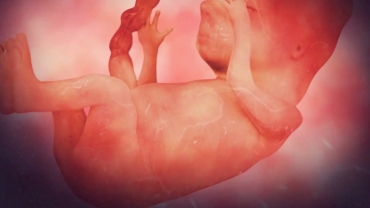The amniotic sac is a bag of clear, pale fluid inside the womb where the unborn baby develops and grows. The fluid helps to cushion the baby from bumps and injury, as well as providing it with fluids it can breathe and swallow. It also maintains a constant temperature for the baby. It usually ruptures before or during labor, or is purposefully ruptured during a C-section.
In this case, the baby was born via C-section moments after his twin. The medical staff gathered around to admire the child before cutting open the sac. In the video, the newborn can be seen moving around inside the sac, receiving oxygen through the umbilical cord. As doctors open the sac, you can see the baby take his or her very first breath.
The Amniotic Sac: A Mysterious Membrane
The amniotic sac starts to form and fill with fluid within days of a woman conceiving. Amniotic fluid is mainly water, but from about week 10 onwards, the baby passes small amounts of urine into the fluid.
The amount of amniotic fluid increases gradually during pregnancy until about week 38, when it reduces slightly until the baby is born.
The amniotic sac is a bag of clear, pale fluid inside the womb where the unborn baby develops and grows. The fluid helps to cushion the baby from injury, and provides it with fluids so it can breathe and swallow.
Being born 'en caul' is the term used when the child is born within an intact amniotic sac, which occurred in the story above. It is also known as a 'veiled birth'. Most en caul births occur in premature babies.
Statistics relating to such births are sparse, but deliveries involving any form of caul are thought to occur in roughly one in 80,000 births.
- 1707 views













